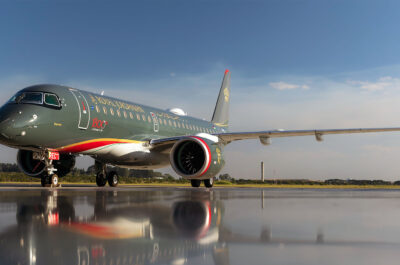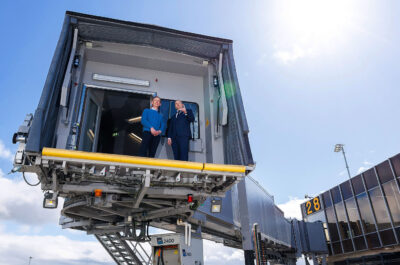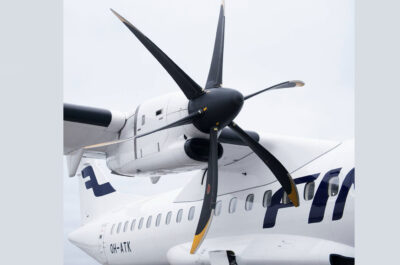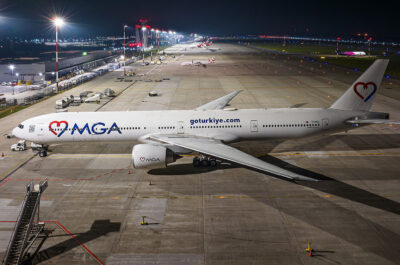International passenger traffic rose 2.6% in March, a significant slowdown compared to the 5.4% increase in February. Capacity rose 5.5% and load factor fell 2.3 percentage points to 78.0%. Most regions experienced a slowdown in year-on-year growth rates.
GENEVA – The International Air Transport Association (IATA) announced global passenger traffic results for March showing a moderation of the pace of growth in demand. Total revenue passenger kilometers (RPKs) increased 3.1% compared to March 2013. Although this represented a slowdown in comparison to the February year-over-year traffic increase of 5.6% , cumulative traffic growth for the first quarter of 2014 was 5.6%, which is a slight improvement over the 5.2% overall growth achieved in 2013.
“After a number of very strong months we are seeing a slowing of demand growth. The strong performance of advanced economies nevertheless is likely to support the continued growth of traffic in the coming months,” said Tony Tyler, IATA’s Director General and CEO.
| Mar 2014 vs. Mar 2013 | RPK Growth | ASK Growth | PLF |
| International | 2.6% | 5.5% | 78.0% |
| Domestic | 4.0% | 4.9% | 80.5% |
| Total Market | 3.1% | 5.3% | 79.0% |
| YTD 2013 vs. YTD 2012 | RPK Growth | ASK Growth | PLF |
| International | 5.4% | 6.1% | 77.8% |
| Domestic | 5.9% | 5.3% | 79.6% |
| Total Market | 5.6% | 5.8% | 78.5% |
International Passenger Markets
International passenger traffic rose 2.6% in March, a significant slowdown compared to the 5.4% increase in February. Capacity rose 5.5% and load factor fell 2.3 percentage points to 78.0%. Most regions experienced a slowdown in year-on-year growth rates.
- Asia Pacific carriers experienced some of weakest traffic growth in March with international traffic up just 1.1% compared to a year ago. Part of this is attributable to the relative slowdown in demand after the positive impacts from the Lunar New Year in January/February. But the result is also probably owing to downward pressure from continued weakness in the Chinese economy, as well as a recent contraction in regional trade volumes. Capacity rose 5.3% and load factor fell 3.1 percentage points to 76%.
- European carriers’ international traffic climbed 2.0% in March compared to the year-ago period, down from a 5.7% growth rate a month earlier. The slowdown may be linked to weaker economic performance in emerging markets given that Europe’s economic performance has been undergoing a continuous, steady improvement since mid-2013. Capacity rose 4.6% and load factor slipped 2 percentage points to 79.6%
- North American airlines saw demand rise 0.6% in March compared to a year ago, a slowdown on the February growth rate of 2.0%. Weakness in international air travel growth for North American carriers is likely in part due to the weather-related slowdown in the first quarter. With capacity up 4.7%, load factor fell 3.3 percentage points to 80%.The latest data suggest that growth trends in business activity are positive and downward pressure on employment is easing, which could support stronger growth in the future.
- Middle East carriers had the strongest year-on-year traffic growth in March at 10.0% as airlines continue to benefit from the strength of regional economies and solid growth in business-related premium travel. The Gulf nations are benefitting from acceleration in non-oil sectors of their economies and positive developments in sectors such as trade, transport and tourism. Capacity rose 10.7% however, and load factor dipped 0.5 percentage points to 79.5%.
- Latin America was the only region to see an improvement in March compared to February, with regional carriers registering a rise of 4.7% year-on-year, compared to 4.2% in the prior month. The outlook for Latin American carriers remains positive, with continued robust performance from economies like Colombia, Peru and Chile. Latin America was the only region with an increase in load factor- in March load factor was 78.8%, up from 77.0% in the year-ago period.
- African airlines experienced the only contraction in demand among the regions, with demand down 2.6% from a year ago. The weakness in international air travel could be in part from the adverse economic developments in some parts of the continent, namely the slowdown of South Africa. Airlines in Africa have seen virtually no growth –only 0.2%– during the first quarter of 2014 compared to the same period in 2013.
Domestic Passenger Markets
The growth of domestic markets slowed in March, rising 4.0% on a year ago, compared to 5.8% in February, but there was significant variation among the largest markets. With capacity up 4.9%, load factor slipped 0.8 percentage points to 80.5%.
| Mar 2014 vs. Mar 2013 |
|
||
| RPK | ASK | PLF | |
| Australia | 3.7% | 3.6% | 75.9% |
| Brazil | 10.3% | 3.4% | 79.8% |
| China P.R | 13.0% | 12.7% | 81.7% |
| India | -0.7% | 7.3% | 71.4% |
| Japan | 8.7% | 6.3% | 65.1% |
| Russian Federation | 11.5% | 13.6% | 67.8% |
| US | 1.6% | 0.3% | 83.2% |
| Domestic | 5.9% | 5.3% | 79.6% |
Growth was especially strong in the developing economies of Brazil, Japan and Russia, with all three recording double-digit increases in demand compared to the year-ago period.
- Brazil domestic air traffic rose 12.0% supported by Carnival-related travel, which began at the end of February and continued into March. Overall, however, the fundamental drivers in Brazil remain fragile with continued economic weakness suppressing domestic demand.
- Russian and Japanese domestic air travel rose 12.8% and 10.0%, respectively, in March. Japan’s continued economic expansion has seen domestic air travel recover strongly over the last nine months while sustained employment and income growth are supporting the growth in domestic air travel in Russia.
The Bottom Line
“Rising demand for air travel tapered in March, following months of increasing demand. Aviation is crucial for economic expansion and development. But it is up to governments to treat aviation as a partner, not as an easy target for overly excessive taxation and onerous regulation or to have its infrastructure needs neglected. When aviation is treated as an economic enabler the industry is able to rise to its full potential as a key engine of growth and job creation,” said Tyler.
Last week, the Air Transport Action Group (ATAG) released new research confirming aviation’s important role in driving economic growth. Research conducted by Oxford Economics in ATAG’s Aviation: Benefits Beyond Borders publication highlights that globally aviation supports over 58 million jobs and some $2.4 trillion in economic activity (equal to 3.4% of global GDP).
“Every day nearly 100,000 flights carry 8.6 million passengers and $17.5 billion of goods to their destination. This activity not only helps to drive economies forward, it enriches the world by bringing people together in a global community,” said Tyler.
From 1-3 June 2014 the global aviation community will meet for the IATA Annual General Meeting and World Air Transport Summit in Doha, Qatar. “Qatar is a great example of a country in which aviation is playing a very strategic role in driving growth and prosperity. It is a great location to remind people of the potential of aviation as the industry celebrates its 100th anniversary,” said Tyler.
Tatiana is the news coordinator for TravelDailyNews Media Network (traveldailynews.gr, traveldailynews.com and traveldailynews.asia). Her role includes monitoring the hundreds of news sources of TravelDailyNews Media Network and skimming the most important according to our strategy.
She holds a Bachelor's degree in Communication & Mass Media from Panteion University of Political & Social Studies of Athens and she has been editor and editor-in-chief in various economic magazines and newspapers.




































































































































